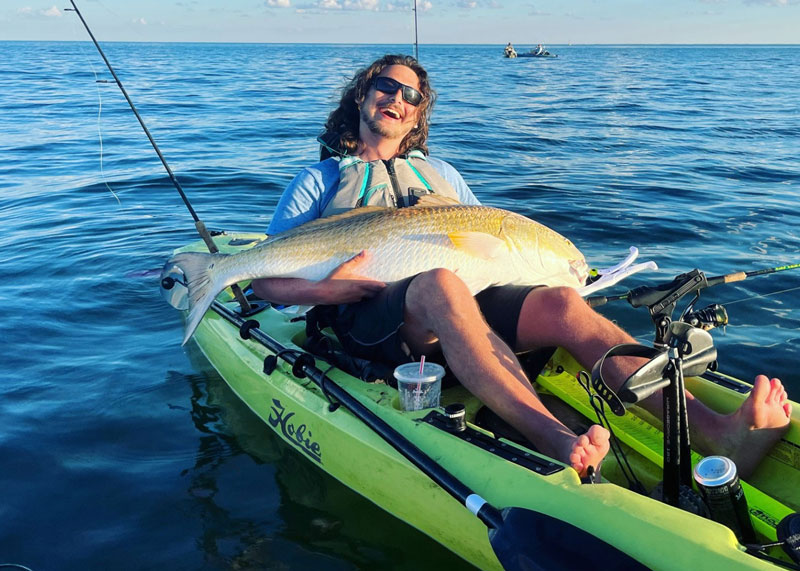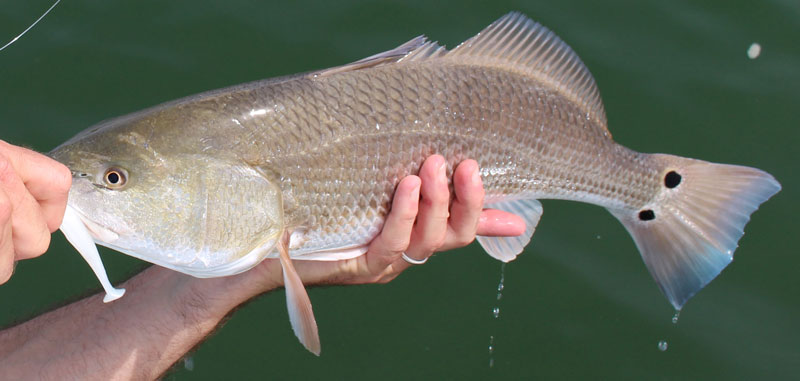For anglers in the southern areas of the Bay — or those willing to travel there — March has come to mean you can start chasing red drum. Will those massive schools of bulls have arrived yet? Probably not. Will puppy drum be so numerous that you can catch them one after the next? Unlikely. But in recent years it’s become clear that if we have a relatively mild March, an angler willing to put in the time and pay his or her dues can head out and have a reasonably good shot at catching redfish long before the headline-worthy runs begin.

First Contact
Where you’ll have the best shot at a close encounter with an early season red may vary year by year and you can bet that we’ll do our best to keep you up to date in the FishTalk fishing reports, but over time patterns do emerge. And history shows that Lynnhaven and Rudee inlets, Poquoson, Mobjack, the lower Eastern Shore inlets, and to a lesser degree the Elizabeth (which for some reason seems to produce more specks than reds in March) have been getting early redfish bites. Or, maybe these areas are getting the play simply because it’s where anglers know to look for them — don't be afraid to try an entirely different area, because this is a fishery that’s been developing and changing in recent years.
On warm, sunny afternoons, shallows warm up faster than deep water and the fish may move up to enjoy the relatively balmy conditions. So, you may find fish in open water areas hunting around in shallow zones near channels and edges, which give the fish easy access to different depths and the ability to move to the warmest available water. An exception will be found in the inlets, where there are plenty of docks. In these waterways, working docks is generally the go-to method for finding the fish. However, no matter where you might be don’t overlook the potential of a pocket of water where the sun beams down all day over a dark bottom or remnant weedbed, gathering heat.
In any of these scenarios having side-scan is a serious advantage (some would say it’s a must). These fish will often be travelling in packs, and may appear one moment and disappear the next. Or they may not appear in the first place. Being able to spot them out to the sides from a distance can be make or break.
Spring into Action
Tackle and tactics for targeting these fish will vary, but as usual can be broken down into two basic schools of thought: using bait versus using artificials. In the case of bait, shrimp is an old standby but live bull minnow (gudgeon) can also be a winner. It’s true that in April when the big bull run hits the fish are often partial to crabs, but those critters aren’t yet active much this early in the season. Minnow in particular are quite active, though, at least they are during warm spells and sunny afternoons, which just so happens to be when the drum tend to get most active. A total coincidence? If you think so, you probably go golfing a lot more than you go fishing.
Minnow can be fished under a cork or, if an old-timer is aboard, you might see one hooked through the lips on a light bucktail or even a bare jighead. In areas that have more hardened structure, like the docks in the inlets, anglers often have success fishing minnow or shrimp on a bare hook. This can be weighted with just enough lead (rubber cores work well and in low current areas split shot can be enough) to get it down and keep it down in the current.
Lure anglers have plenty of options, but it’ll be very tough to beat a simple four- to seven-inch paddletail rigged on a half-ounce or lighter jighead. In some cases, although it will squelch your casting range quite a bit, rigging weightless or fishing a straight fluke will be a good move. In others, putting a cork above the lure can work well and this also boosts your casting range. When fishing an artificial under a cork, always remember it’s good to do more chugging and less pausing as compared to when using bait.

Playing Hide and Seek
Remember to stay on the move and search, search, search for these fish. In all likelihood the schools will be compact and fewer in number at this time of year, and an area may seem devoid of life for hours at a time until you stumble across one. Whatever you do, don’t fish from sunup to 3:00 then go home. Often the fish will make their presence known late in the afternoon after a warmup, so keep moving, exploring, and searching until the sun becomes low and weak.
Are you likely to have more action if you wait a bit longer before heading out ISO redfish? Sure. Might you spend a day on the water this March casting in vain? It happens. But only an angler who’s willing to take the risk can reap the rewards, and we say that catching a Chesapeake red in March is one heck of a worthy reward to go after.